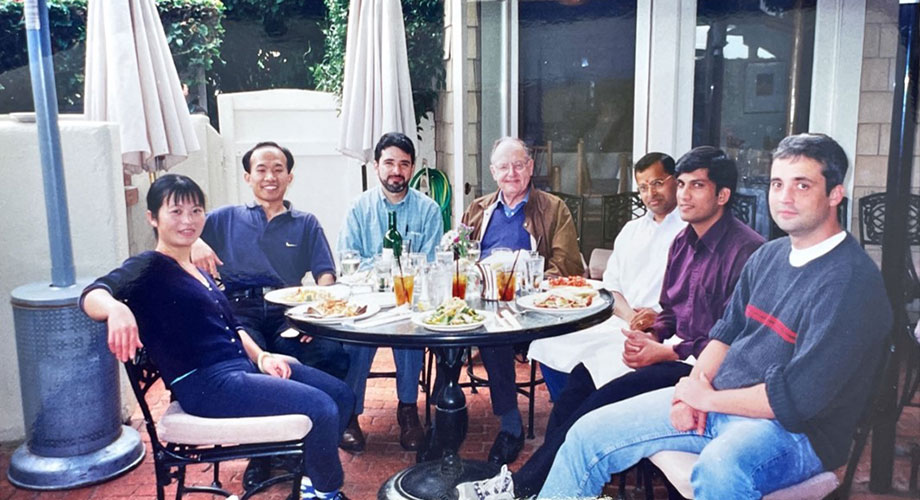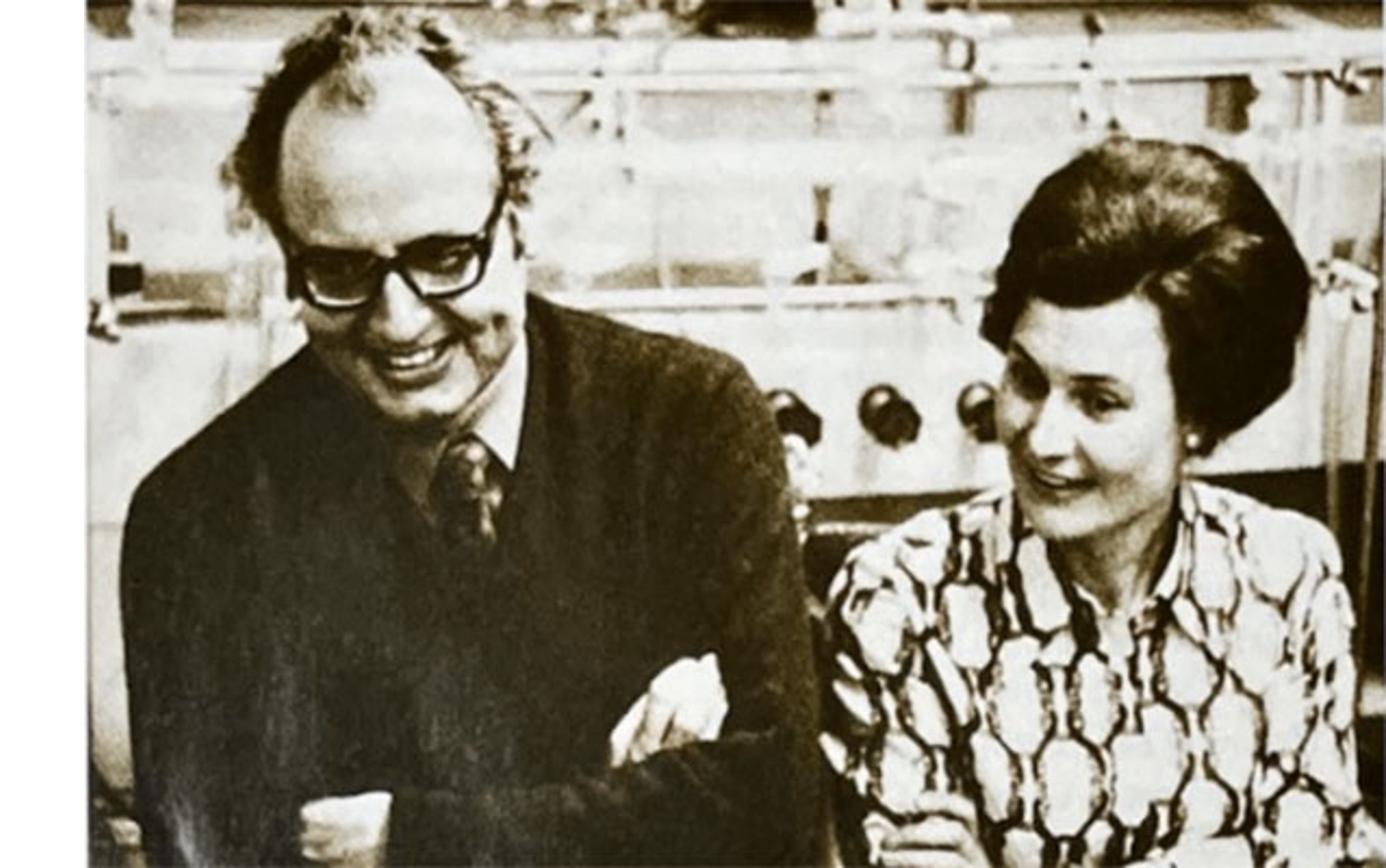
Albert Eschenmoser (center) with his Scripps Research laboratory group, including professor of chemistry Ramanarayanan Krishnamurthy (third from the right).
Scripps Research mourns passing of leading organic chemist Albert Eschenmoser
Eschenmoser pioneered key reactions in synthetic chemistry and shaped the understanding of how life may have first originated on Earth.
July 18, 2023
LA JOLLA, CA– Albert Jakob Eschenmoser, PhD, a longtime faculty member at Scripps Research and pioneer in organic chemistry, passed away on July 14, 2023. He was 97 years old.
“Eschenmoser was the greatest chemist I have ever known and posed some of the biggest scientific challenges that I have faced throughout my career,” says Ramanarayanan Krishnamurthy, PhD, professor of chemistry, who started a laboratory with Eschenmoser at Scripps Research. “Beyond his pioneering work, he was a thoughtful and generous mentor and friend, and always inspired unconventional ways of thinking,” Ramanarayanan added. “He will be missed dearly by his close colleagues.”
Eschenmoser was born on Aug. 5, 1925, in the mountain town of Erstfeld, Switzerland. He attended a university preparatory school, where he was first inspired to pursue chemistry. He completed his undergraduate degree and doctorate from the Swiss Federal Institute of Technology (Eidgenössische Technische Hochschule, ETH) in Zürich. His doctoral research focused on natural products called terpenes, under the supervision of Nobel laureate Leopold Ružička.
After receiving his doctorate in 1951, Eschenmoser built his own research group at ETH, where he was promoted to privatdozent (equivalent to assistant professor) in 1956. In the early 1960s, having become a professor of general organic chemistry at ETH, he and his group, in close collaboration with researchers at Harvard, were integral to the landmark synthesis of vitamin B12.
After meeting former President of Scripps Research Richard Lerner at an academic conference, Eschenmoser joined the institute as a faculty member in 1996. During his tenure at Scripps Research, Eschenmoser pursued the fundamental question of how life first emerged on Earth. He demonstrated how the molecular ribose ring characteristic of RNA and DNA was a major contributor to the stability of the nucleic acids, yet at the same time showed that there were other chemical structural units that could well have combined to generate the genetic material we have today.
 His discoveries in abiotic chemistry also provided a plausible explanation for how these biological building blocks could have emerged billions of years ago from the prebiotic soup on early Earth.
His discoveries in abiotic chemistry also provided a plausible explanation for how these biological building blocks could have emerged billions of years ago from the prebiotic soup on early Earth.
As testament to his significant contributions over more than five decades of research, Eschenmoser's name is attached to several chemical ingredients and reactions, including Eschenmoser's salt, the Eschenmoser fragmentation, the Eschenmoser sulfide contraction and the Eschenmoser–Claisen rearrangement.
He received numerous academic awards, such as the Royal Society's Davy Medal, the Tetrahedron Prize for Creativity in Organic Chemistry, the ACS Arthur C. Cope Award, the International Society for the Study of the Origin of Life Oparin Medal, and the Royal Society of Chemistry's Sir Derek Barton Gold Medal. Eschenmoser was also an active member of many professional societies, including the German Academy Leopoldina, Academia Europaea, the American Academy of Arts and Sciences, the National Academy of Sciences, and the Royal Society.
“For me, he was almost like a father figure,” says Krishnamurthy. “He lived and breathed chemistry and it was in everything he saw and touched.”
Eschenmoser is survived by his wife Elisabeth, son Philipp and daughter Esther. He is predeceased by a son, Jürg.
“It’s like digging through geological layers. You start by thinking about what could have happened and develop certain ideas. Sometime later you recognize that your ideas are too naive, and you re-approach the problem. The view you develop is different from that on the first layer. And that doesn’t stop. It goes further and further, until you have gone through I don’t know how many layers, and you are still asking yourself whether you are approaching something that is actually real.”
– Albert Eschenmoser on the question of how life began on Earth. Reproduced from Chemistry World
For more information, contact press@scripps.edu

